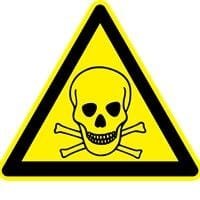(BRUSSELS) – EU ministers gave the final green light Thursday for amendments to the carcinogens and mutagens directive, an EU law which protects workers from exposure to carcinogenic and mutagenic substances.
The revision will improve workers’ protection by setting exposure limits for acrylonitrile and nickel compounds and lowering existing limits for benzene. The directive will from now on also offer increased protection against reprotoxic substances, chemicals which may interfere with the human reproductive system. These substances were previously dealt with under a different law.
According to Commission data, more than one million workers are exposed to acrylonitrile and nickel compounds and benzene, and 52% of occupational deaths in the European Union each year are due to cancer.
The limit values for 12 reprotoxic substances that are currently dealt with under another EU law will be transferred to the stricter carcinogens and mutagens directive. The directive will therefore be renamed the carcinogens, mutagens and reprotoxic substances directive, or CMRD.
Healthcare workers who deal with carcinogenic, mutagenic or reprotoxic drugs, so called hazardous medicinal products, will receive better training on how to handle them safely. The new law stipulates that the Commission must issue guidelines on training, surveillance and monitoring of these products.
According to the revised directive, the Commission has been tasked to present an action plan to achieve new or revised occupational exposure limits values for at least 25 substances, groups of substances or process-generated substances no later than 31 December 2022 and present legislative proposals, where appropriate.
Member states have two years following today’s adoption to comply with the agreed changes.
Directive on carcinogens and mutagens at work (European Agency for Safety and Health at Work)
Promoting health and tackling diseases (Background information)


